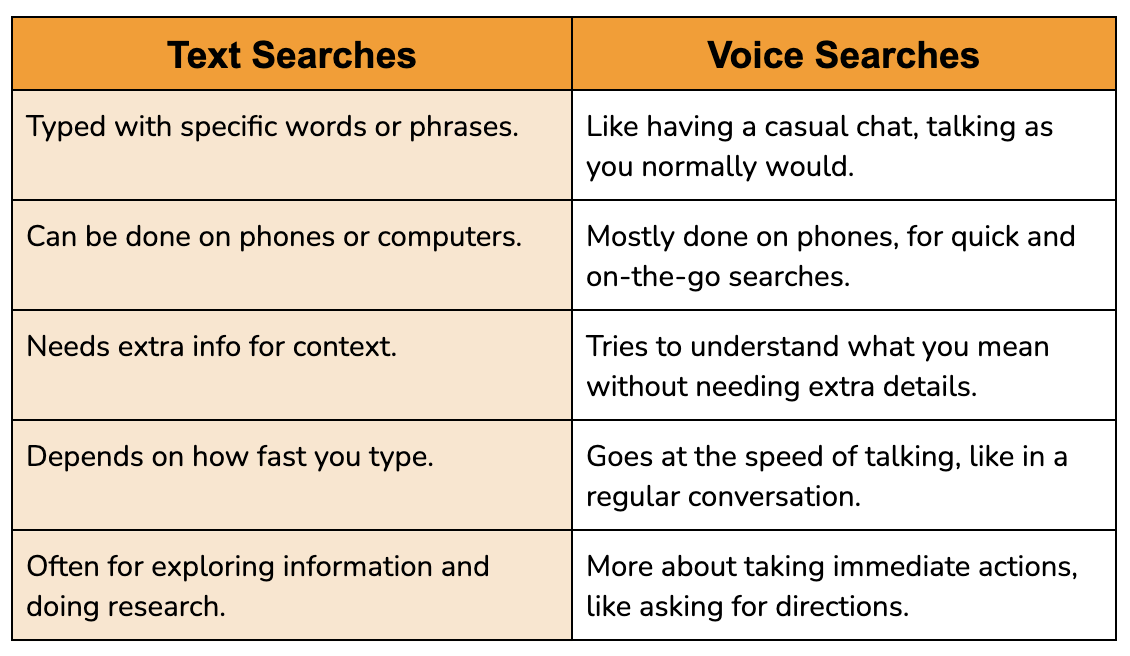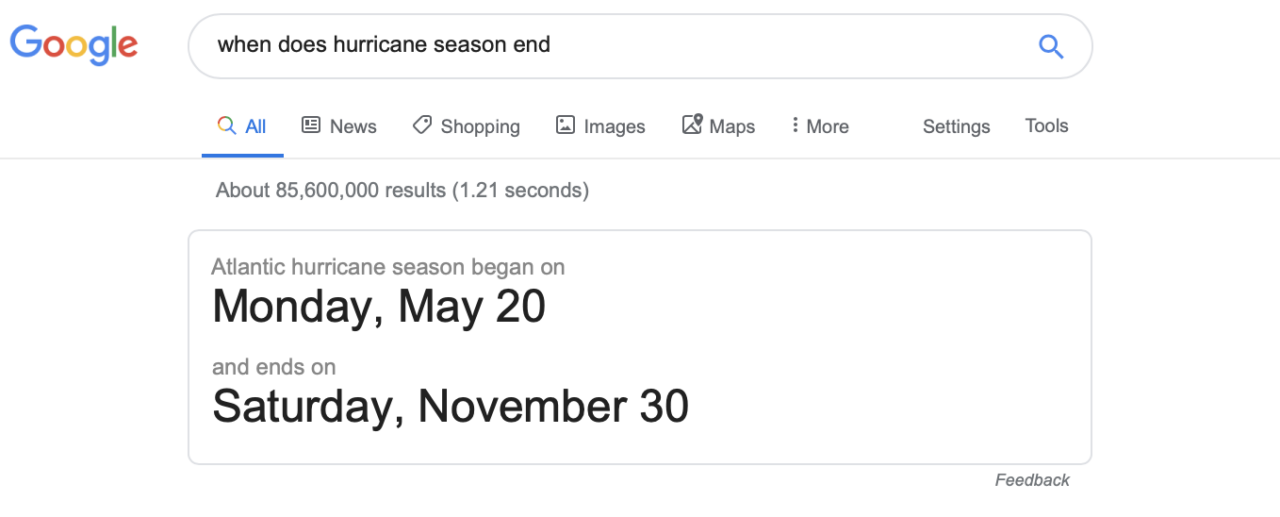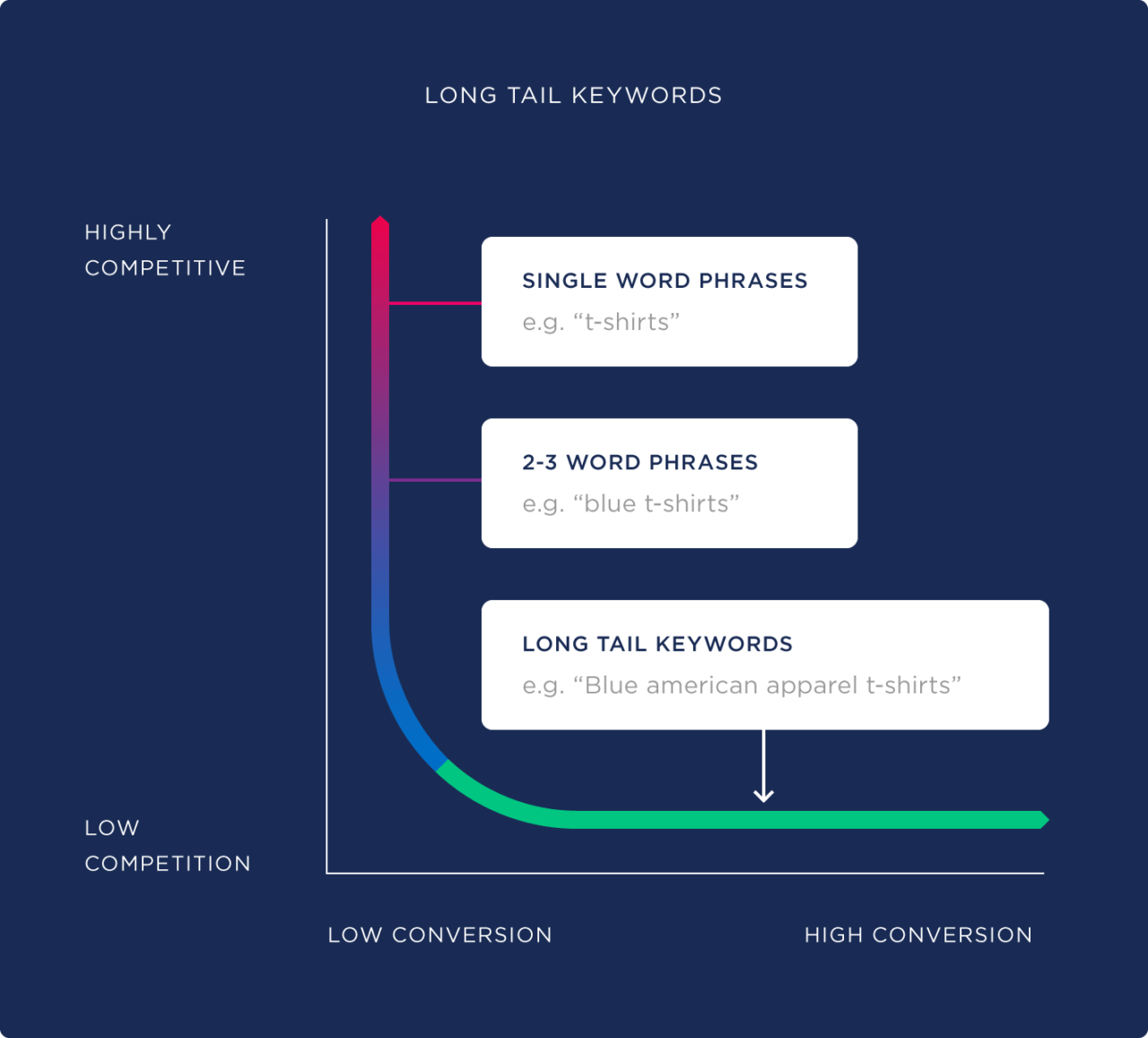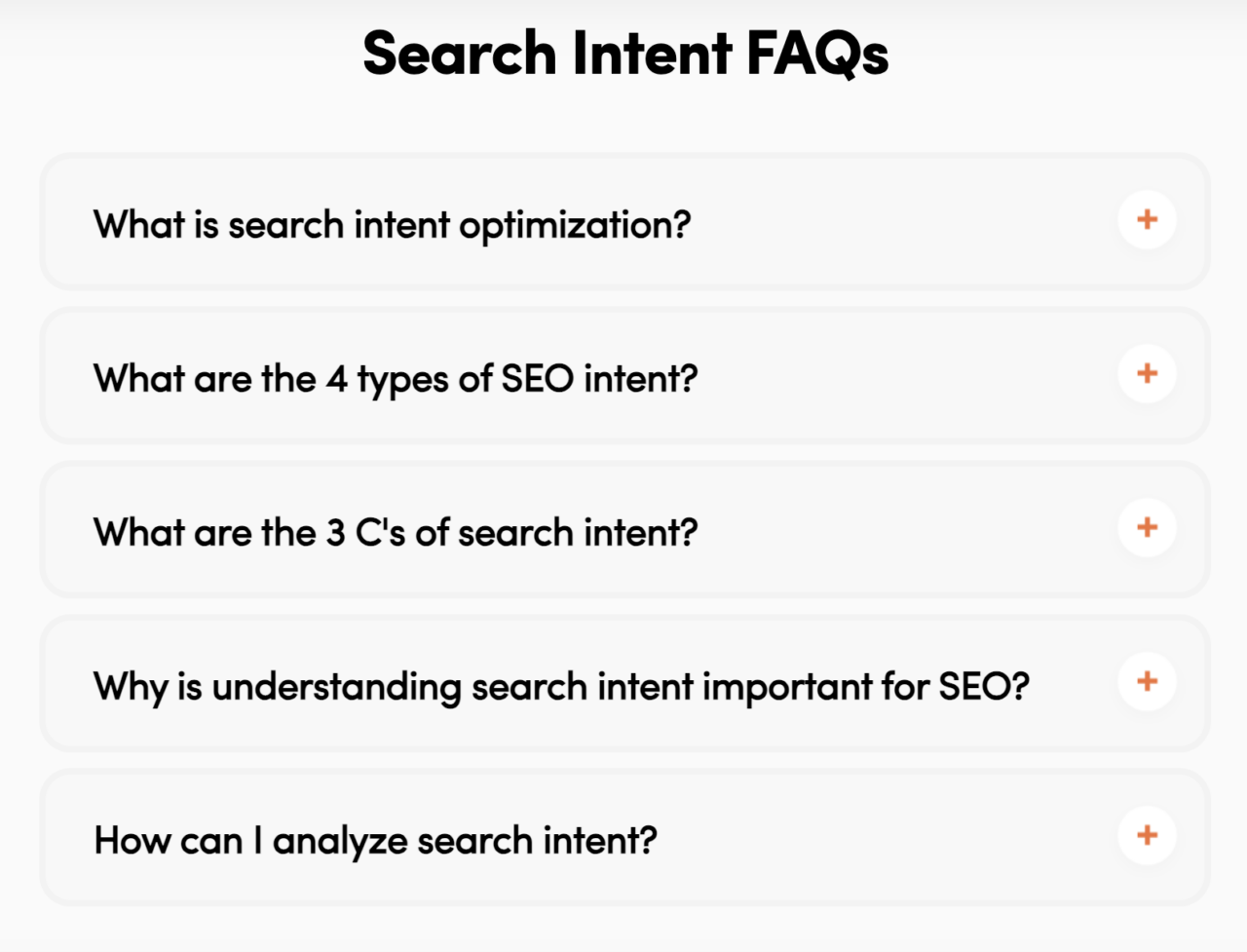Voice search is transforming how we interact with the web, thanks to advancements in conversational AI. This shift isn’t just a trend, either – it’s a fundamental change in user behavior. With the growth of voice-enabled devices, implementing voice search optimization has become crucial for anyone looking to stay ahead in the SEO game.
In this comprehensive guide, we’ll go over six strategies to optimize your website for voice search in order to acquire more search engine real estate for voice searches.
What Is Voice Search?
Voice search is the technology that enables speaking into a search engine (as opposed to typing) to request information. Voice search technologies use natural language processing (NLP) to understand spoken commands and convert them into text-based queries.
Why is this so important for businesses? Because:
71% of searchers prefer to conduct queries using voice instead of typing.
Common applications of voice search include:
- Launching Programs and Selecting Options: Opening applications or software on their devices when hands-free operation is needed, such as while driving, cooking or during other physical tasks.
- Voice Dialing: Making phone calls by simply stating the name of the contact or dictating the phone number.
- Information Queries: Asking for news updates, weather forecasts, general knowledge questions, etc.
- Local Searches: Finding local businesses, services or directions (e.g., “Where’s the nearest coffee shop?”).
- Personal Assistant Tasks: Setting reminders, making phone calls, sending texts, managing calendars, etc.
- Entertainment: Playing music, streaming videos or reading audiobooks.
The continuing interest in both mobile devices and the Internet of Things (IoT) has greatly contributed to the rise of and need for voice search. This is largely due to the widespread adoption of smartphones, tablets and IoT devices like smart speakers, home automation systems and wearable technology. All these things were built with voice search functionality in mind.

As these devices become even more integrated into our daily lives, they make it extremely convenient and natural to perform searches through simple voice commands.
Introduction to Voice Search Optimization
Voice search optimization is a strategic approach to enhance online content and digital presence for the growing prevalence of voice-activated searches.
As voice search devices and assistants such as Siri, Google Assistant and Alexa become more prevalent, voice search users naturally are increasingly turning to voice commands for accessing information, products and services.
Here is a simple visual explanation of how voice search works:

Optimizing for voice search keywords involves tailoring digital content to align with the conversational and natural language used in voice queries. This optimization encompasses various elements, including the integration of long-tail and local voice search queries, the creation of content structured for featured snippets, and the adaptation of websites for mobile compatibility.
Here is an example of finding long-tail keywords to use to optimize your site for voice searches:

As the landscape of search behavior continues to evolve, a proactive voice search optimization strategy becomes essential for businesses and digital marketers to ensure their online visibility and relevance in the era of voice-activated search.
Importance of Voice Search in SEO
Voice search is important in SEO because it reflects the way that many people are now searching for information online. This growing preference for speaking queries rather than typing them requires websites to optimize for conversational language and long-tail keywords, as voice searches are often more natural and specific than typed queries.
Here are the key advantages of voice search optimization:
- Natural Language Processing (NLP): Voice search optimization leverages advancements in Natural Language Processing, enabling search engines to better understand and interpret conversational queries.
- Increased Accessibility: Voice search makes information more accessible, especially for users with mobility issues or those who prefer hands-free interactions.
- Local Business Visibility: Voice searches often include local intent, making voice search optimization crucial for local SEO.
- Featured Snippet Opportunities: Optimizing for Google voice search increases the chances of being featured in snippets, which can significantly boost visibility in search engine results.
- Adaptation to Changing Search Behavior: With users embracing search by voice, optimizing your website by using conversational SEO techniques allows businesses to adapt to evolving search behavior and reach their target audience.
- Improved Content Strategy: Voice search optimization encourages a shift toward more conversational and informative content, aligning with user preferences.
- Mobile-First Indexing Alignment: Voice search optimization inherently aligns with mobile-first indexing, emphasizing the importance of mobile-friendly websites for an optimal user experience.
How Voice Queries Differ from Text Searches
Most people have probably searched for information using both methods, but let’s quickly show the difference between voice and text queries:

The Role of Natural Language in Voice Search
In voice search, natural language plays a vital role as it’s how people communicate with voice-enabled devices and search engines. Voice search uses speech recognition technology to grasp the spoken language, which allows users to easily and conveniently voice their queries and get relevant results.
Here’s what you should know about the role of natural language in voice search:
- Conversational Queries: When engaging with Google search through voice, users often express themselves in a more natural and conversational manner. Voice search caters to this by comprehending and processing these types of queries. For example, someone might ask Google, “Can you help me find easy-to-follow vegetarian recipes for dinner?” rather than using a more concise, and type-written, query like “vegetarian dinner recipes.”
- Long-Tail Keywords: Voice searches often involve longer and more specific queries, referred to as long-tail keywords. This is because individuals tend to ask questions in a detailed and natural manner when using voice commands.

To make sure their content is relevant for voice search queries, businesses and content creators need to optimize for these longer phrases.
- Context Awareness: Thanks to natural language processing, Google Voice is equipped to understand context and intent, providing more precise and contextually relevant responses. For instance, if a user queries, “How’s the traffic to downtown L.A. on a Monday morning?” and follows up with “What about alternative routes?”, the Google Voice assistant comprehends the context of the second question, which enhances the continuity of the conversation.
- User Experience: Natural language improves the overall user experience in voice search. People are more likely to engage with voice-enabled devices if they can communicate in a way that feels natural and intuitive. Voice interfaces that comprehend and respond to natural language contribute to a user-friendly and accessible experience.
What Challenges Does Voice Search Present for Marketers?
Before we dive into how to optimize your site for voice search, it’s helpful to understand the new marketing challenges that may arise as a result.
The evolving nature of voice search means significant shifts in optimization strategies for websites are on the horizon, including:
- More complex queries. Early voice-search technology required users to carefully choose each word of their query – simple commands and relevant keywords worked best. Today, new technology is making complex questions possible, which means that it is more responsive to natural speech.
- Less visual cues. Marketers are used to putting a lot of thought into how information is displayed on a screen for maximum visual impact and retention. As users move away from their screens and toward voice-only search, marketers are going to have to rethink the importance of visual information and come up with new strategies when they need to emphasize something.
- Fiercer competition. Voice search is ideal for short interactions, like finding the best restaurant in town or looking for the nearest post office. Since voice results typically only pull from the top response for any given query, landing in that top spot will be more important than ever.
- Local search results. Voice searches are heavily slanted toward “in-the-moment” queries from people on the go or those trying to fulfill an immediate need – which is where local search excels.
- Flexibility is key. Every voice search device is a little bit different from the others. For example, Google devices often pull voice search responses from Google’s Answer Box, or “position zero.” Siri is more likely to give you a location-based response. You have to be conscious of your optimization strategy and plan accordingly.
If you’ve been steadily improving your website’s optimization and tweaking it for local search, you’re already on the right path. Now you just need to start digging a little deeper with voice search in mind.
How to Optimize Your Site for Voice Search
Clearly, there are both advantages and disadvantages that come with the increase of voice search, but either way, we need to adapt our marketing strategies. Let’s take a look at six key changes you need to make with your content marketing campaigns to incorporate voice search.
1) Optimize for the Rank Zero Snippet
The “rank zero snippet” (also known as “position zero,” “featured snippet” or “zero-click search”) is of crucial importance when it comes to voice search.
When users make a voice search query, they’re given one answer, similar to the featured snippet that appears at the top of a traditional search result page. The difference, of course, is that this is the only answer they’re given. That rank zero snippet is how you can get your content in front of users via voice search.

In order to compete for the position zero snippet, do the following:
- Structure key information in your content as if answering a question. In this post, for example, the first paragraph under “what is voice search” provides crucial information for the post we’re writing, but it’s also a short, concise answer that could do well in featured snippets. This is even more effective if you’re using H2s as questions (starting with who, what, why, where, when, how) to lead into the answer:

- Keep it short. The average featured snippet is 40-50 words and is always written in clear, straightforward language.
- Consider adding lists to your content. Short bullet lists may not show up in voice results as often, but they can do well in featured snippets, so consider using them just in case.
- Target long-tail, conversational keywords. Formulate your content around the specific questions your users ask. We’re going to talk about this a little more in just a second, but voice search is much more conversational, so you’re looking at long-tail keywords instead of short-tail keywords. Keep this in mind when doing your keyword research, and make sure your target keyword is in the content itself.

- Help your content rank higher. Focus on ranking on page one, since over 99% of featured snippets come from top ten search results. Use relevant keyphrases most used in searches that pull up featured snippets, which include words like best, recipe, cost, price, and definition.
- Match title tags and headers exactly: Adjust your title tags and headers so that they mirror the exact question posed by users.
- Get help from Google Analytics. Use analytics to learn the keywords that users are searching for to find your site, articles or products.
- Answer more questions from the PAA section: Pay attention to “People also ask” (PPA) questions in the SERPs and then answer them in your content.
- Update year reference: Content containing dated references—such as the query “meditation techniques for 2025”—should be updated to reflect current data and trends.
2) Adjust Your Keyword Research Strategy
As we just mentioned above, keyword research is going to be a little different when you’re targeting voice search queries.
If you’re sitting at a computer, for example, and want to find a local coffee shop that has dairy-free options, you might search “orlando coffee, dairy-free.” If you use voice search, however, you might say “Hey Google, where’s the closest coffee shop near me with dairy-free options?”

We’re seeing an enormous surge of “near me” keywords, but they’re also becoming more conversational, addressing their voice assistants almost like an actual person. They’re a little more specific, so content that capitalizes on specific niche needs may do well.
Your keyword strategy needs to account for that.
Go all in on location-based keywords if this is relevant to you and you’re trying to target local traffic, but you’ll also want to focus on more long-tail, conversational keywords. Some examples are:
- “Where can I find the best Italian restaurants near me?”
- “Which gyms offer personal training?”
- “What are the top-rated hiking trails in my area?”
- “How do I choose the right skincare products for my skin type?”
Try to incorporate more conversational keywords into your H2 headers, and consider looking for question-based keywords with a tool like Semrush to see exactly what – and how – people are asking:

3) Create Content with Frequently Asked Questions (and Answers)
Because voice search results give searchers just one answer, that answer needs to be useful and correct. It also needs to be easy to understand and brief. Create content that’s easily broken down into small pieces.
This doesn’t mean that your pages all need to be brief, however. In fact, the opposite is true. You want to provide snippets of information that are easy for the smart speaker to articulate and deliver quickly, but you also want to pack your site with information.
The more information you put out there, the greater your chances of providing a match to a question in voice search.
In fact, you need to constantly be on the prowl for questions that are relevant to your brand, products or services. Mine social media platforms and explore emails from customers for new questions specific to your product or niche that you can answer and new ways to show your authority.
For example, voice search responses pull heavily from “Frequently Asked Questions” pages, which makes sense when you realize that the questions people ask in voice search tend to exactly match a question posed on an FAQ page:

Think FAQs when creating your content.
There are differences between the phrases people use during voice search and traditional online search. You may have noticed some of these differences when you’ve performed a Google search:
- Typing: movie theater times
- Voice: Give me showtimes for the closest movie theater
- Typing: Thai food delivery in my area
- Voice: What restaurants deliver Thai food near me?
- Typing: directions to Six Flags
- Voice: Take me to six flags
If you pay attention, you may notice a pattern. When you speak to your customers on the phone or in person, there’s a good chance that they use the same words and phrases that they would in voice search. Learn the questions that they are asking you and note the phrases you hear over and over again. Then answer those questions.
For example, if you sell fine, hand-crafted furniture, you might describe one of your items as ‘Primitive Maple Dining Table’. That’s fine, but if your customers are searching for ‘Yellow-Finish Heavy Kitchen Table,’ that reduces the chance that they will actually find what they are looking for in voice search.
In a sense, you are learning the actual long-tail keywords that your customers are using.
4) Use Structured Data
Creating relevant content is the best way to optimize for voice search. There are other ways to help Google and other search engines better understand your content and how it should be ranked and categorized.
To accomplish this, you can use structured data:

Or schema markup:

Using schema markup language does not have a direct impact on search engine rankings, but it can still help optimize your website and blog content for voice search.
Structured language is not something that is visible to people reading your content. Instead, it is micro-data that is embedded in your code that search engines can read to better understand your content (check out this great tutorial for using structured data on your website).
If you’ve ever searched for a type of business and seen search engine results showing hours of operation, contact information, upcoming event dates, and other data, that is the result of using structured data:

Another example of this is often seen when you search for recipes. When search results show pictures, cooking steps, and ingredients, this is because markup language was used to highlight that information from content on that website:

Here’s how using structured data can help with voice search. A large amount of voice search is local. People tend to be on their phones when looking for information such as directions, phone numbers, the hours that a business is open, and other immediate-need information. By using structured data, you can highlight this kind of info on your website.
To help ensure that everything is in place, use the Google structured data testing tool to verify that you are on the right track:

5) Make Sure Your Content Is Mobile Friendly
As already mentioned, mobile is the primary source for voice search – which makes this about the 1,000,000,001 reason that your website or blog should be mobile friendly!
In fact, now might be a good time to see if it is as mobile friendly as you think it is with a tool like PageSpeed Insights:

To optimize for voice search, invest the time and resources in cleaning up any mobile issues that you have now.
If you are using a CMS, you might consider looking into themes, plugins or other options that implement responsive design principles.
If you want to forego using a tool, just remember to apply the basics of mobile-friendly content writing and web page layout:
- Use plenty of white space.
- Break things down into short paragraphs.
- Use subheadings, bullet points, and numbered lists.
- Don’t use sluggish scripts or images that aren’t optimized.
- Be concise. If content writing isn’t your strong point, it may be time to outsource at least a portion of these tasks.
6) Make Sure You Have a Google Business Listing
One of the best ways to optimize for voice search queries is to optimize for local search. You’ll also get the added bonus of making it easier for your customers to locate you.
On your website, you can do this by simply including your location and contact information in a place that’s conspicuous. Include the information on the header or footer of every one of your web pages. That way people don’t have to look for it.
This doesn’t mean you shouldn’t also have a contact information page. You absolutely should. It needs to include your basic contact and location information, along with other information such as an online contact form.
Local searches tend to work in two ways:
- The location is either explicitly named in the search (e.g. car repair in St. Louis).
- Or Google uses location services to determine the user’s location (e.g. car repair near me).
The latter is quite common, and a key reason to take ownership of your Google Business listing and ensure that it is complete and accurate:
Here is a checklist to use when completing your Google My Business profile:
- Ensure that basic information like name, address and phone number (NAP) is complete.
- Use a business email associated with your website and not a free account.
- Include a phone number with the area code.
- Make sure your location information is consistent between your website, Google Business profile, and any other local business directories.
- Upload some high-quality pictures to make your listing more attractive.
- Select all of the relevant categories for your business.
- Don’t select irrelevant categories in an attempt to attract new customers.
- Take advantage of the introduction field to fully describe your products and services.
Last Word on Voice Search Optimization
The rise of voice search is changing the game for marketers and brands, and it’s essential to adapt now if you haven’t already. It’s not that traditional search is now null and void – it’s not, and it won’t be for quite some time, if ever – but you’ll need to structure your content in a way that appeals to both traditional SEO and voice search engine optimization.
If you’re ready to level up your content with AI tools, Single Grain’s AI experts can help!👇
Additional content contributed by Joydeep Bhattacharya.
Voice Search Optimization FAQs
-
How do I optimize Google ads for voice search?
To optimize Google Ads for conversational search optimization, use conversational, long-tail keywords that mimic natural language. Craft ad copy casually, addressing common questions users might ask. Enhance your ads with relevant information through extensions and ensure mobile-friendly landing pages. If applicable, emphasize local targeting for users with location-specific queries. Also, experiment with ad formats compatible with voice searches and regularly monitor performance data to identify trends.
-
What role does mobile optimization play in voice search SEO?
Mobile optimization is crucial for voice SEO, as many voice searches occur on mobile devices. Mobile-friendly websites that load quickly are more likely to rank higher in voice search results.
-
Do featured snippets play a crucial role in voice search SEO?
Yes, featured snippets play a crucial role in voice search. Virtual assistants frequently extract answers from featured snippets when responding. Enhancing your page content to be featured in snippets raises the likelihood of being chosen as the voice search result.






